Excavation Contractors Kingsclere
Find the best Excavation Companies in Kingsclere
Get 3 FREE Excavating Contractor quotes for your project today! Compare profiles, reviews, accreditations, portfolio, etc... and choose the best offer.
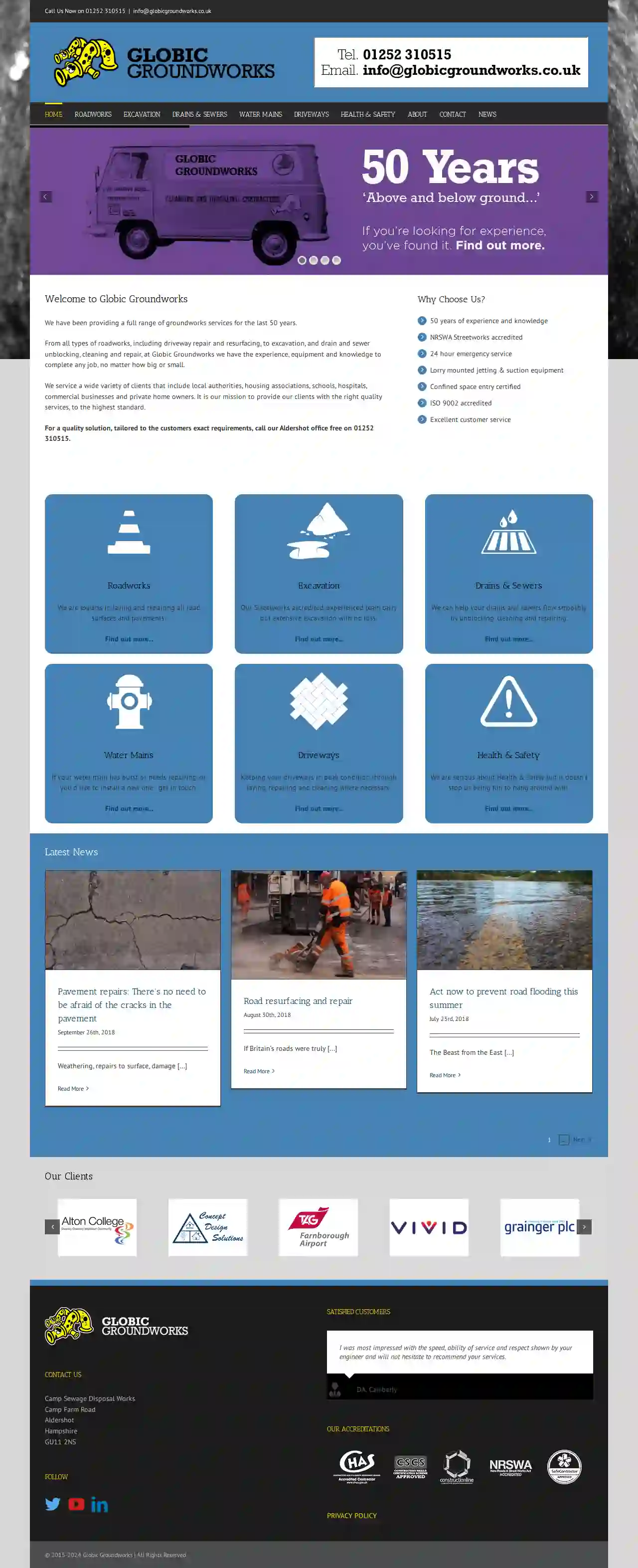
Globic Groundworks
Camp Sewage Disposal Works, Camp Farm Road, Aldershot, GU11 2NS, GBWelcome to Globic Groundworks Globic Groundworks has been providing a comprehensive range of groundworks services for the past 50 years. From all types of roadworks, including driveway repair and resurfacing, to excavation, and drain and sewer unblocking, cleaning and repair, Globic Groundworks possesses the experience, equipment, and expertise to tackle any project, regardless of size. We cater to a diverse clientele, including local authorities, housing associations, schools, hospitals, commercial businesses, and private homeowners. Our unwavering commitment is to deliver high-quality services that meet the highest standards, exceeding our clients' expectations. For a tailored solution that precisely aligns with your specific requirements, contact our Aldershot office toll-free at 01252 310515.
- Services
- Why Us?
- Accreditations
- Testimonials
- Gallery
Get Quote
Gosport Plant & Tool Hire
525 reviewsUnit 6 Cranbourne Road, Gosport, Hants., PO12 1RL, GBWelcome To Gosport Tool Hire Gosport Plant and Tool Hire is a family owned and run business, servicing a growing demand from DIY’ers and professional construction workers in Gosport, Fareham, Stubbington, Lee on Solent and surrounding areas. It has been established to provide access to the high quality, fairly priced tools needed by customers who currently have to travel further afield to find a reliable option. OX Tools Outlet Gosport Plant & Tool Hire also has a retail arm in the form of ‘OX TOOLS’ which provides all necessary accessories for their Hired Tools. eg. from cutters, discs, drill sets, sandpaper etc and a comprehensive range of small tools eg. spirit levels, tape measures, trowels etc. that the average ‘DIY’er (or builder) may require in the course of their project.
- Services
- Why Us?
- Gallery
Get Quote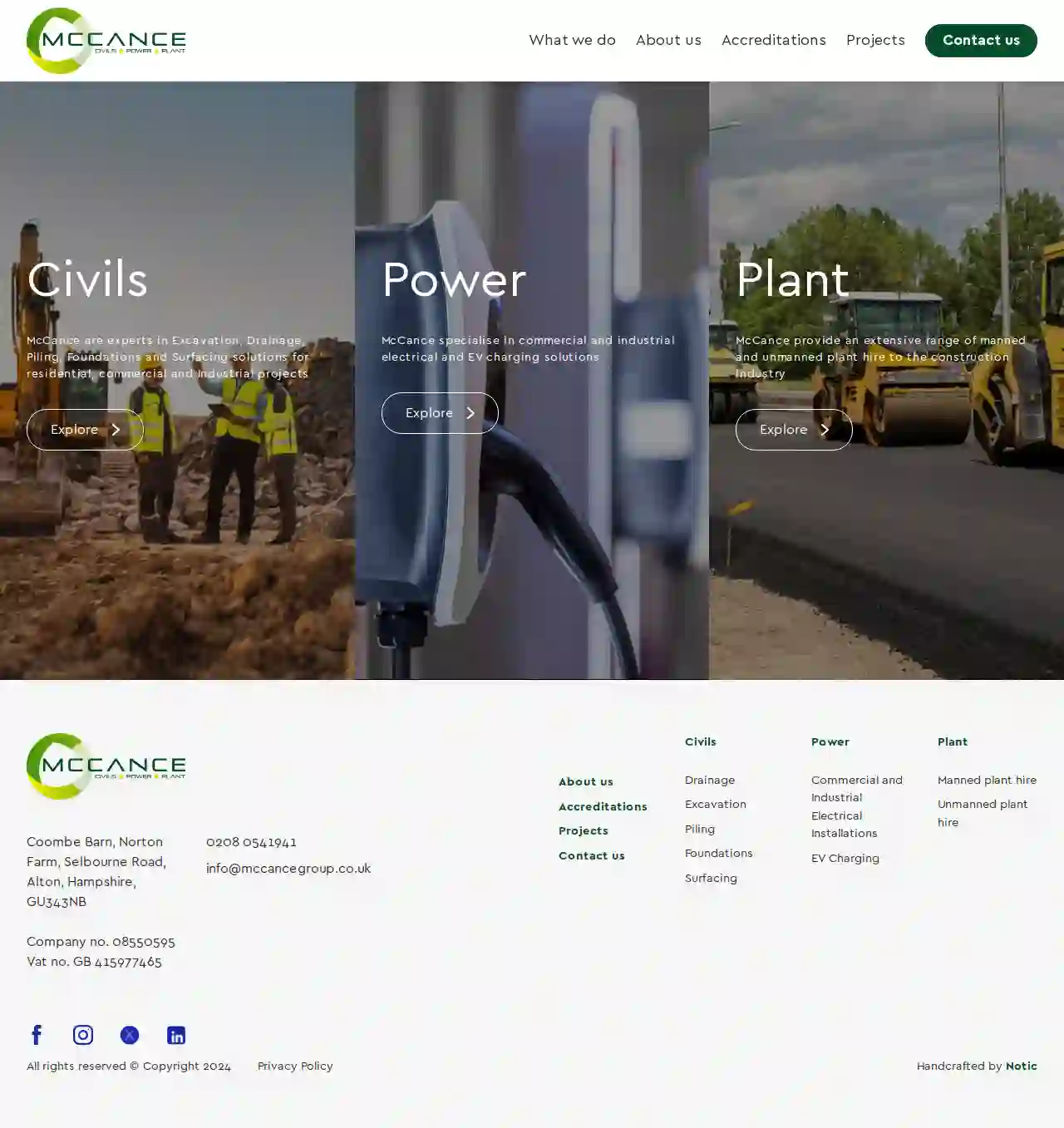
McCance Group
Coombe Barn, Norton Farm, Selbourne Road, Alton, Hampshire, GU343NB, GBMcCance Group: Your Trusted Partner for Construction and Infrastructure Solutions McCance Group is a leading provider of construction and infrastructure solutions, specializing in a wide range of services including civils, drainage, excavation, piling, foundations, surfacing, power, and plant hire. We are committed to delivering high-quality, reliable, and cost-effective solutions to meet the needs of our clients. Our team of experienced professionals is dedicated to providing exceptional service and exceeding client expectations. We are committed to safety, quality, and environmental responsibility in all our operations. Whether you are a residential, commercial, or industrial client, McCance Group has the expertise and resources to handle your project from start to finish. We are proud to have a strong track record of successful projects, and we are committed to building long-term relationships with our clients. Contact us today to discuss your project needs and learn how McCance Group can help you achieve your goals.
- Services
- Why Us?
- Gallery
Get Quote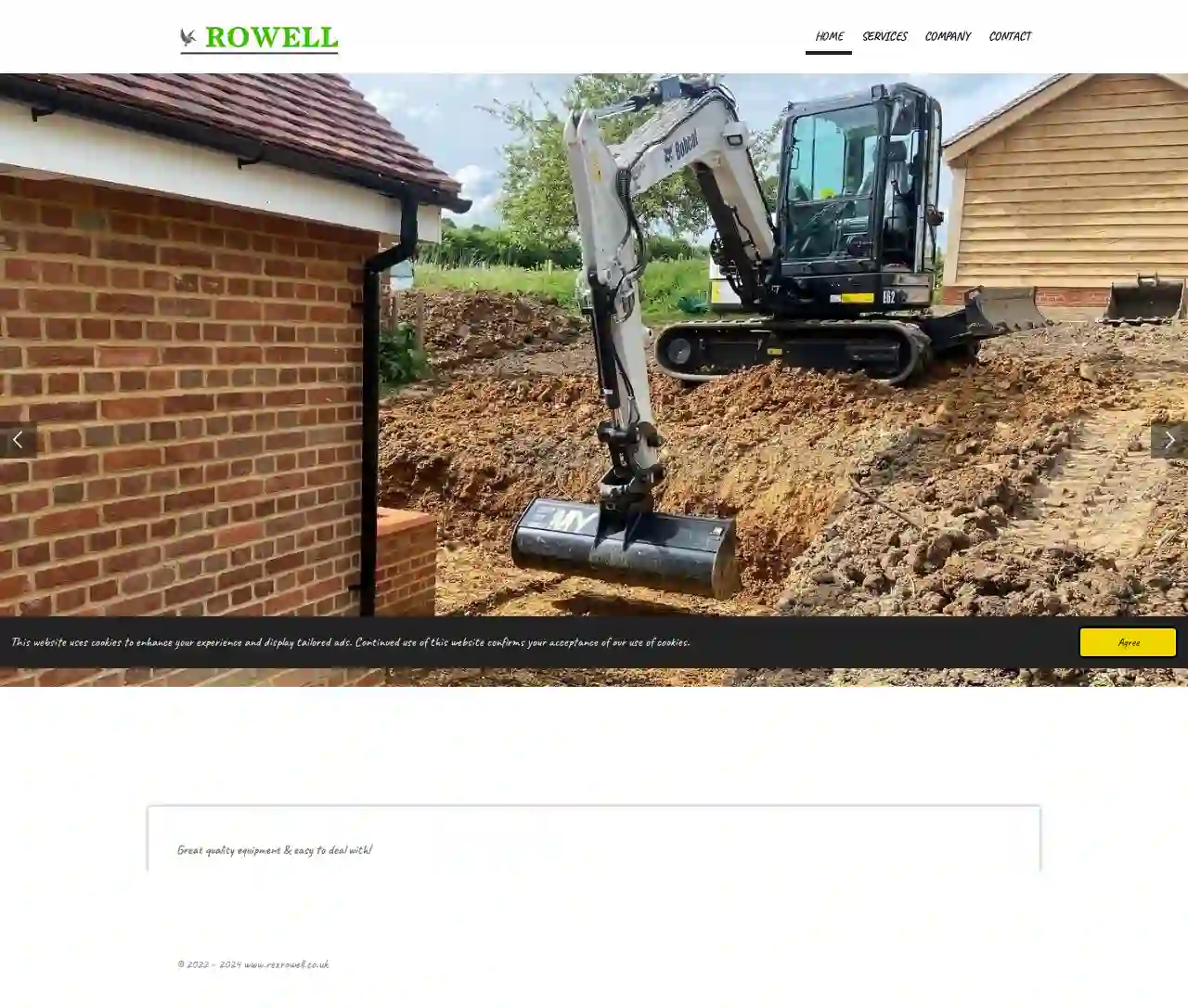
Rex Rowell Groundworks
57 reviewsAldershot, GBPutting Safety First Home Safe Every Day Established in 2016, Rex Rowell is a fully insured groundwork and plant hire company operating throughout Surrey and Hampshire. We are committed to providing a professional and reliable service, with a focus on safety and quality. Our team of experienced operators and skilled groundworkers are dedicated to delivering exceptional results on every project. We offer a wide range of services, including: Plant Hire Operator & Excavator Hire Trial Hole Digging Soak Away Test Pitts Foundations Ditching Archaeological Digging Groundwork Site Clearance Bulk Excavation Ponds & River Banks Soak Away Instillation Drainage Treatment plants Construction Car Parks Retaining Walls & Structures Roads & Tracks Driveways Concrete Slabs We are fully insured to £5 million and are CPCS & CSCS compliant. We are also proud to be a member of the Construction Industry Scheme (CIS). Our commitment to safety is paramount. We have a comprehensive health and safety policy in place and all our operators are fully trained and qualified. We are also committed to environmental sustainability and strive to minimize our impact on the environment. We are confident that we can provide you with the highest quality service and workmanship. Contact us today to discuss your project requirements.
- Services
- Why Us?
- Testimonials
- Gallery
Get Quote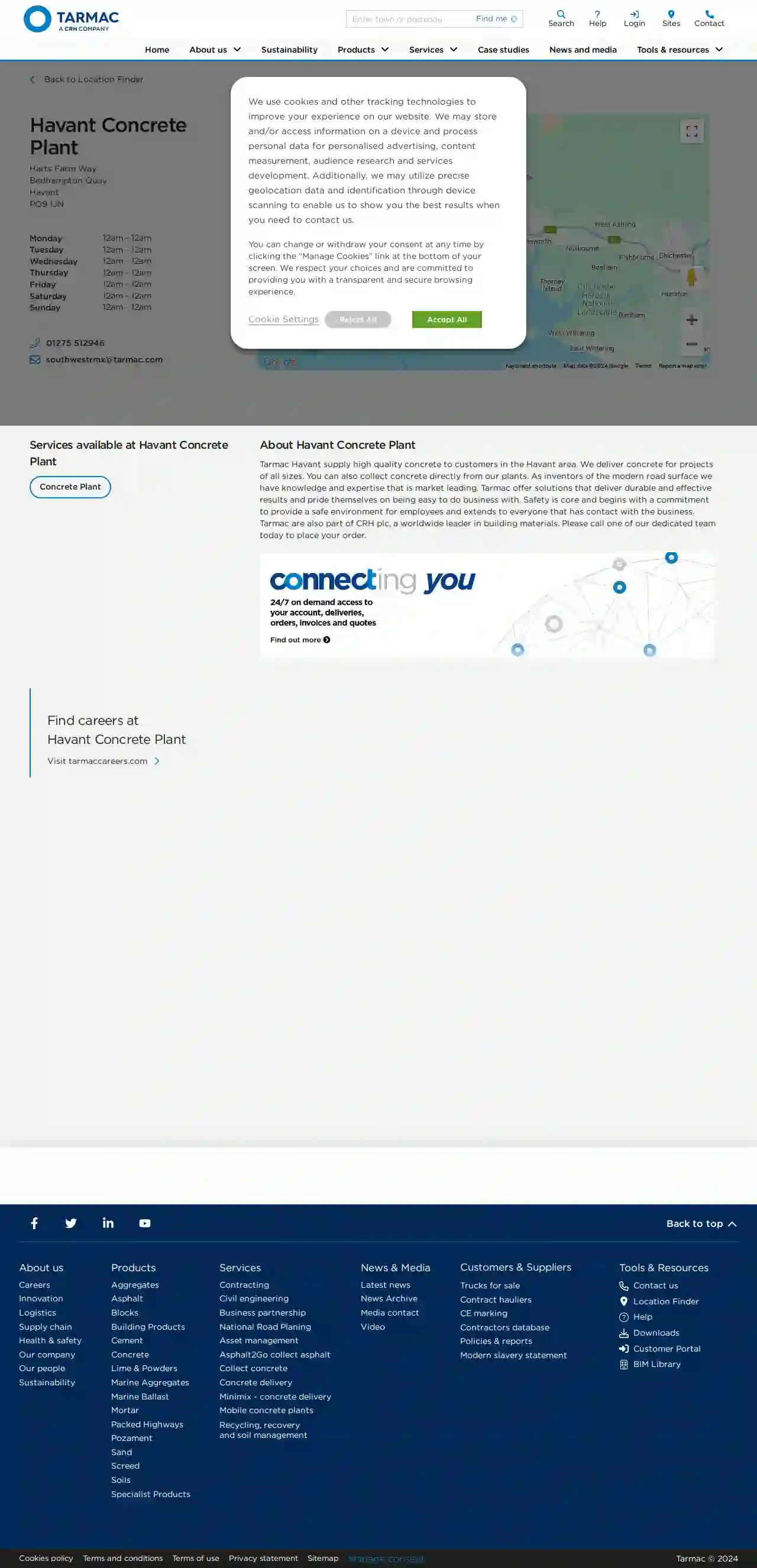
Tarmac Havant Concrete Plant
Tarmac House, 100 Hagley Road, Birmingham, B9 4XJ, GBAbout Tarmac Tarmac is a leading supplier of sustainable building and construction materials in the UK. We are committed to providing innovative solutions that meet the needs of our customers while minimizing our environmental impact. Our History Tarmac has a long and rich history dating back to the early 20th century. We have been at the forefront of innovation in the construction industry, developing new products and technologies that have helped to shape the built environment. Our Mission Our mission is to be the leading provider of sustainable building and construction materials in the UK. We are committed to providing our customers with the highest quality products and services, while also working to reduce our environmental footprint. Our Team Tarmac is made up of a team of dedicated and experienced professionals who are passionate about delivering exceptional results. We are committed to providing our employees with the training and development opportunities they need to succeed. Our Experience We have a wealth of experience in the construction industry, having worked on a wide range of projects across the UK. We are committed to delivering projects on time and within budget, while also meeting the highest standards of quality and safety.
- Services
- Why Us?
- Accreditations
- Testimonials
- Gallery
Get Quote
DA Johnstone Plant Hire LTD Plant Office
Johnstone House, Longhirst, Morpeth, United Kingdom, NE61 3HZ, GBWelcome to D A Johnstone Plant Hire DA Johnstone Plant Hire Ltd are a family-owned excavator hire company that has been in business for over 27 years. We have a wide range of excavators available for hire, from 1 tonne to 50 tonnes, and we’re proud to be one of the most reputable plant and machinery hire companies in the country. Whether you’re looking to road construction or landscaping, we have the right excavator for your project. And because we’re a family business, you can be sure that you’ll receive the personalised service that you deserve. Contact us today to find out more about our Nationwide plant and machinery hire services. 27 YEARS IN THE BUSINESS DA Johnstone Plant Hire Ltd are a family-owned excavator hire company that has been in business for over 27 years. We have a wide range of excavators available for hire, from 1 tonne to 50 tonnes, and we’re proud to be one of the most reputable plant and machinery hire companies in the country. Whether you’re looking to road construction or landscaping, we have the right excavator for your project. And because we’re a family business, you can be sure that you’ll receive the personalised service that you deserve. Contact us today to find out more about our Nationwide plant and machinery hire services.
- Services
- Why Us?
- Testimonials
- Gallery
Get Quote
The Parchment Makers - JD Wetherspoon
41 Park Road North, Havant, Hampshire, PO9 1HE, GBThe Parchment Makers The Parchment Makers is a traditional pub located in Havant, Hampshire. It's a welcoming and friendly pub with a wide selection of beers, ciders, wines, spirits, and soft drinks. The pub also serves a delicious menu of pub classics, including burgers, steaks, and fish and chips. The Parchment Makers is a great place to enjoy a drink with friends, watch a game on TV, or have a meal. History The Parchment Makers is a traditional pub located in Havant, Hampshire. It's a welcoming and friendly pub with a wide selection of beers, ciders, wines, spirits, and soft drinks. The pub also serves a delicious menu of pub classics, including burgers, steaks, and fish and chips. The Parchment Makers is a great place to enjoy a drink with friends, watch a game on TV, or have a meal. Our Team Our team is dedicated to providing our customers with a great experience. We are always happy to help with any questions or requests you may have. We are passionate about our pub and our community, and we are always looking for ways to improve our service.
- Services
- Why Us?
- Gallery
Get Quote
PJ Seaman Groundworks
Liss, GBAbout PJ Seaman Construction & Groundworks PJ Seaman Construction and Groundworks is a family-run business providing a wide range of construction and groundworks services to customers throughout the South of England. We have more than 10 years of experience in the industry and our team of experienced professionals are committed to providing the highest quality workmanship and customer service on every job. Our Commitment We take pride in our work and our goal is to exceed your expectations on every job. From the initial consultation to the final inspection and completion of the project, we will ensure that your satisfaction is our top priority. We are fully insured and all of our work is guaranteed for your peace of mind. Our Experience We have been trusted by customers in the West Sussex, Hampshire and Surrey for many years and we look forward to helping you with all of your construction and groundworks needs. If you are looking for a reliable, professional and experienced company to provide you with the highest quality construction and groundworks services, look no further than PJ Seaman Construction and Groundworks. Contact Us Today Contact us today to discuss your project and get a free, no-obligation quote.
- Services
- Why Us?
- Gallery
Get Quote
Wroxton Ltd
11 reviewsUnit 16, Redfields Business Park, Church Crookham, Fleet, GU52 0RD, GBPrestigious Landscape Design From design, to build, through to maintenance, we can create your perfect garden. Quality Fencing Installation We offer all types of fencing, from standard timber close board to fancy metal railings and security and environmental fencing. Show Gardens We've been installing luxury garden designs in show houses for commercial clients for over 20 years. Residential Projects Free consultation and no obligation quote, Wroxton produce high quality private gardens. Commercial Contracts Working to tight deadlines producing speedy and efficient work, Wroxton are the number one choice for a number of leading UK house builders. Public Open Spaces Our plant, machinery and experience make us an easy choice for large scale projects. Plant and Machinery Services We supply a large range of plant and machinery – available to hire out with a driver. Here at Wroxton we offer a diverse range of external services. We have over 25 years experience in the landscaping business and pride ourselves in our attention to detail, unique design ideas and our dedication to client satisfaction. Based in Berkshire & Hampshire, but working all over the south, we work on both commercial and residential projects ranging from £500 to over £1 million. Employing over 40 hardworking individuals, we are able to take on large scale contracts, and with our expert management systems able to provide extremely fast response times which offer our clients first class service – this can be invaluable given the biggest demand for new build developments in decades. At Wroxton we avoid sub-contracting, hence are able to control the cost and quality of our work and so deliver an expert service whenever called upon. Our services include: Hard and Soft Landscaping Tree Services Metal, Timber, Agricultural & Security Fencing Plant Hire Maintenance Groundworks In addition, Wroxton Group provides and owns all its plant and machinery. As a result we can provide the most cost effective and competitive prices for our contracts, working closely with many of the UK’s leading housing developers – hence for many we are the number one choice! Our Key Services LANDSCAPING PLANT FENCING DESIGN Why Choose Us Because...we have years of experience, and constantly strive to maintain an excellent, efficient service all round. If you’re choosing us you already know you’re going with a reputable company that will always go that extra mile to satisfy our customers. And because...with all our own plant and machinery, and great supply contacts within the construction industry, we can guarantee the most competitive quotes. With over 40 employees we can offer great lead times to get the job finished as soon as possible.
- Services
- Why Us?
- Testimonials
- Gallery
Get Quote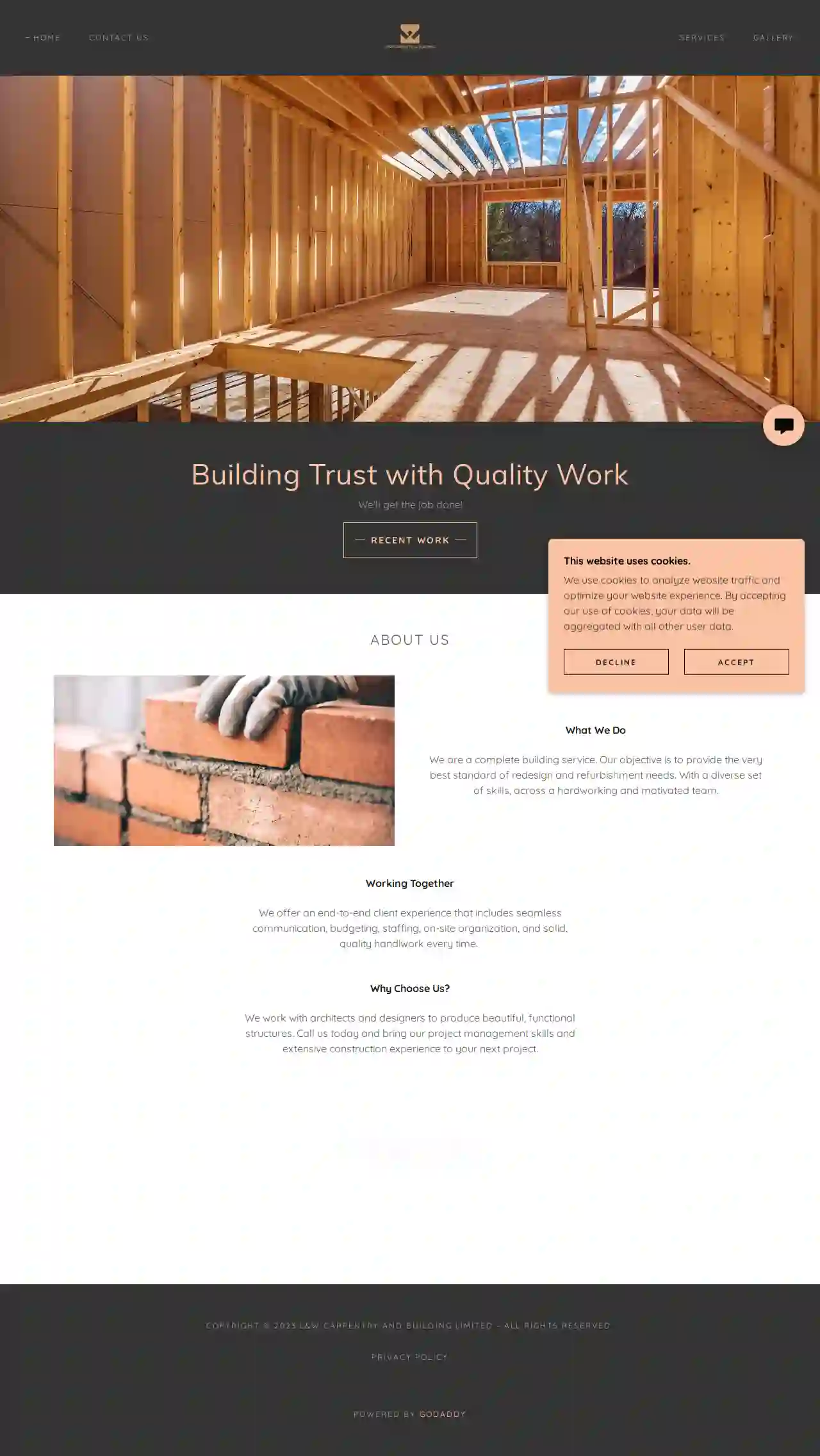
L&W Carpentry and Building Limited
55 reviewsHavant, GBL&W Carpentry and Building Limited We are a family-run business with over 15 years of experience in the construction industry. We are committed to providing our clients with the highest quality workmanship and customer service. We specialize in loft conversions, extensions, kitchens and bathrooms, and we offer a complete building service. We work closely with trusted engineers to provide you with the best service possible. We take you through the planning permission stage with your local council then once granted, through the building control with your assigned officer, then when the project is finished the local building control office sign the work off and give you the documentation. Your in safe hands when things are done by the book. We are fully insured and accredited, and we are committed to providing our clients with a stress-free experience. We offer free quotes and consultations, and we are always happy to answer any questions you may have. Contact us today to discuss your project.
- Services
- Why Us?
- Gallery
Get Quote
Over 13,059+ Excavation Companies on our platform
Our excavation providers operate in Kingsclere and beyond!
ExcavationHQ has curated and vetted the Best Excavation Contractors near Kingsclere. Find a top & trustworthy contractor today.
Frequently Asked Questions About Excavation Contractors
- Sloped Property: Your property has a significant slope, making it prone to soil erosion or landslides.
- Creating Usable Space: You want to level off a sloped area to create a flat surface for patios, gardens, or other outdoor spaces.
- Preventing Damage: Erosion is threatening existing structures, driveways, or walkways.
- Landscaping Features: You're incorporating tiered gardens, raised beds, or other landscaping elements requiring soil retention.
- Project Type and Size: Ensure the contractor has experience handling projects similar to yours in scale and complexity.
- Reputation and Reviews: Check online reviews and testimonials, and request references from previous clients.
- Licensing and Insurance: Verify that the contractor is properly licensed and insured to protect you from liability.
- Equipment and Resources: Confirm that they have the necessary equipment and resources for your project's needs.
- Communication and Transparency: Choose a contractor who communicates clearly, provides detailed estimates, and keeps you informed throughout the project.
- Safety Record: Inquire about their safety protocols and track record to ensure a safe work environment.
- Price: While price is important, it shouldn't be the only deciding factor. Balance affordability with experience, reputation, and quality of service.
- Basement Size: The larger the basement, the more excavation is required, increasing the cost.
- Soil Type: Excavating rocky or dense clay soil is generally more expensive than loose soil.
- Accessibility: Difficult-to-access sites might require specialized equipment or more labor, driving up costs.
- Foundation Type: The chosen foundation type (full basement, crawl space, slab) affects excavation needs.
- Underpinning: If underpinning (strengthening existing foundations) is necessary, it significantly increases costs.
- Disposal Fees: Hauling excavated soil to disposal sites adds to the overall expense.
How do I know if I need a retaining wall?
What is the difference between cut and fill excavation?
Cut: Involves excavating soil from an area where the existing grade is higher than the desired grade.
Fill: Refers to using the excavated soil ('cut' material) to raise the grade in an area where the existing grade is lower than desired.
This method minimizes the need to import or export soil, reducing costs and environmental impact. It's commonly used for site preparation, road construction, and landscaping.
How do I choose the right excavation contractor for my project?
How much does it cost to excavate a basement?
How do I know if I need a retaining wall?
- Sloped Property: Your property has a significant slope, making it prone to soil erosion or landslides.
- Creating Usable Space: You want to level off a sloped area to create a flat surface for patios, gardens, or other outdoor spaces.
- Preventing Damage: Erosion is threatening existing structures, driveways, or walkways.
- Landscaping Features: You're incorporating tiered gardens, raised beds, or other landscaping elements requiring soil retention.
What is the difference between cut and fill excavation?
Cut: Involves excavating soil from an area where the existing grade is higher than the desired grade.
Fill: Refers to using the excavated soil ('cut' material) to raise the grade in an area where the existing grade is lower than desired.
This method minimizes the need to import or export soil, reducing costs and environmental impact. It's commonly used for site preparation, road construction, and landscaping.
How do I choose the right excavation contractor for my project?
- Project Type and Size: Ensure the contractor has experience handling projects similar to yours in scale and complexity.
- Reputation and Reviews: Check online reviews and testimonials, and request references from previous clients.
- Licensing and Insurance: Verify that the contractor is properly licensed and insured to protect you from liability.
- Equipment and Resources: Confirm that they have the necessary equipment and resources for your project's needs.
- Communication and Transparency: Choose a contractor who communicates clearly, provides detailed estimates, and keeps you informed throughout the project.
- Safety Record: Inquire about their safety protocols and track record to ensure a safe work environment.
- Price: While price is important, it shouldn't be the only deciding factor. Balance affordability with experience, reputation, and quality of service.
How much does it cost to excavate a basement?
- Basement Size: The larger the basement, the more excavation is required, increasing the cost.
- Soil Type: Excavating rocky or dense clay soil is generally more expensive than loose soil.
- Accessibility: Difficult-to-access sites might require specialized equipment or more labor, driving up costs.
- Foundation Type: The chosen foundation type (full basement, crawl space, slab) affects excavation needs.
- Underpinning: If underpinning (strengthening existing foundations) is necessary, it significantly increases costs.
- Disposal Fees: Hauling excavated soil to disposal sites adds to the overall expense.